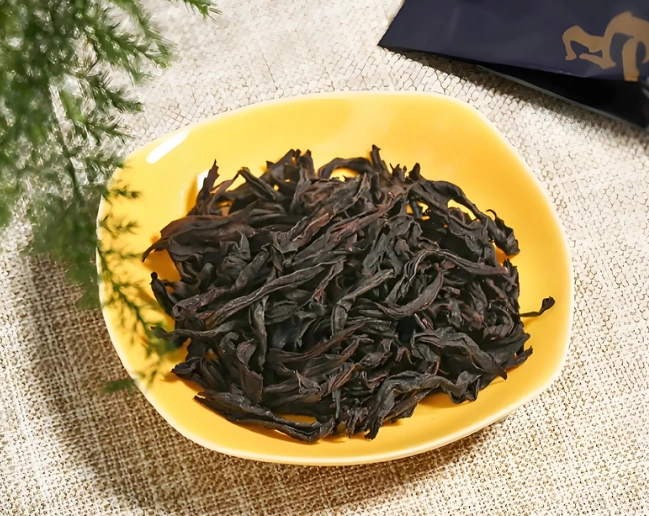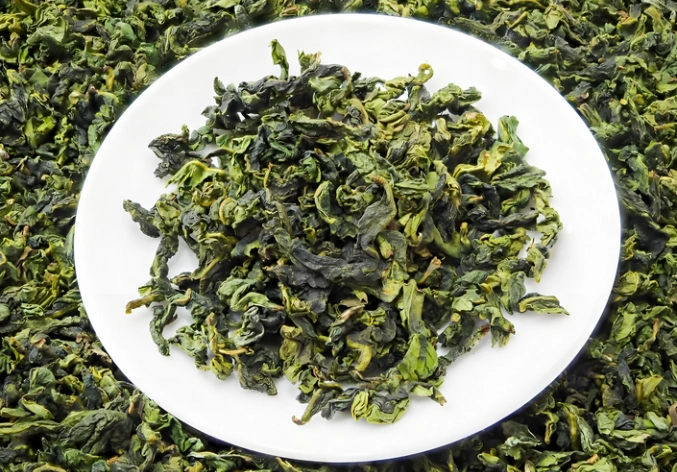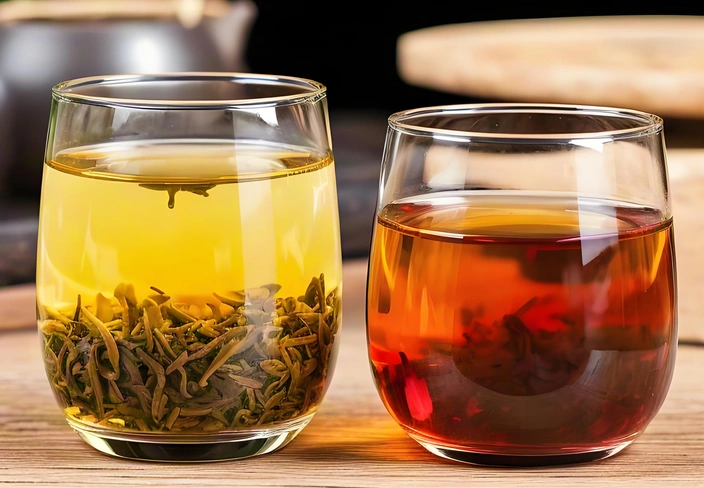Roasted oolong tea benefits unfold like a warm embrace, inviting you into a world of rich aromas, soothing warmth, and vibrant health. Envision a porcelain cup filled with deep amber brew—the steam carries whispers of toasted chestnut, caramelized sugar, and gentle floral undertones. With each velvety sip, your senses awaken, tension melts away, and an inner glow stirs.
In this journey, we’ll explore how roasted oolong tea benefits span from powerful antioxidants and metabolic support to digestive relief and mental clarity—plus expert tips on selection, brewing, and savoring every moment.

What Is Roasted Oolong Tea?
Roasted oolong tea begins as partially oxidized leaves—bridging the worlds of green and black tea—then undergoes intentional roasting over charcoal or high-fire kilns. This final step transforms the tea’s character:
- Color: Leaves darken to olive-green or deep brown; liquor glows amber.
- Aroma: Floral top notes give way to toasty chestnut, cocoa, or caramel.
- Flavor: A silky body unfolds layers of sweet roast, gentle smoke, and a lingering mineral finish.
From Light Roast oolong tea to the bold depths of High Fire oolong tea, roasting levels shape both flavor and health potential.
The Roasting Process: From Green Leaf to Toasted Pearl
- Initial Oxidation: Leaves rest under controlled humidity, triggering enzymatic browning.
- Fixation: Quick heat stops oxidation, preserving desired polyphenols.
- Rolling: Leaves are gently kneaded into tight spirals, ready for roast.
- Roasting:
- Light Roast: Short, low-heat passes maintain more floral notes.
- High Fire: Intense, prolonged roast brings robust, smoky complexity.
Artisans adjust temperature, charcoal type, and timing—each variable unlocking unique roasted oolong tea benefits.
Flavor Profile & Aromatics of Roasted Oolong
A well-crafted roasted oolong delights the palate:
- Top Notes: Mellow honey, dried florals.
- Mid Palette: Toasted almond, brown sugar, dark chocolate hints.
- Base Notes: Warm smoke, roasted chestnut, slate minerality.
- Finish: A clean, sweet afterglow that beckons the next sip.
The multi-layered aroma makes every infusion a sensory voyage.

Health Benefits of Roasted Oolong Tea
Antioxidant Power
Roasted oolong retains potent polyphenols—catechins, theaflavins, thearubigins—that scavenge free radicals, helping protect cells from oxidative stress and aging.
Metabolic Support & Energy
Studies suggest oolong polyphenols boost oolong tea and metabolism, supporting thermogenesis and fat oxidation. A daily cup can gently enhance calorie burn and sustain energy without jitters.
Digestive Aid & Gut Comfort
Warm roasted oolong soothes the gastrointestinal tract. Its mild caffeine and L-theanine relax smooth muscle, while antioxidants promote healthy enzyme activity—echoing oolong tea for digestion virtues.
Stress Relief & Mental Clarity
The comforting roast aroma acts as aromatherapy, while L-theanine fosters calm focus. This blend of relaxation and alertness helps melt away tension and sharpen concentration.
Roasted vs. Light Roast Oolong Tea: Key Differences
| Aspect | Light Roast Oolong Tea | Roasted / High Fire Oolong Tea |
|---|---|---|
| Aroma | Bright floral, fresh | Toasted, nutty, smoky |
| Flavor | Sweet orchid, honeyed | Caramel, roasted chestnut, toffee |
| Polyphe nol Profile | Slightly higher catechins | Enhanced theaflavins, thearubigins |
| Digestive Impact | Gentle, floral | Warming, soothing |
While Light Roast highlights delicate florals, High Fire oolong tea immerses you in rich, grounding warmth.

High Fire Oolong Tea: An Extra Layer of Depth
High Fire oolong intensifies roasted nuances. Deep kiln roasts:
- Amplify antioxidant transformations
- Create complex Maillard reaction flavors—dark caramel, roasted barley
- Provide robust roasted oolong tea benefits for circulation and metabolic warmth
Ideal on cool mornings or after heavy meals, High Fire infusions comfort body and soul.
Comparing Roasted Oolong with Other Varieties
Tieguanyin Oolong Tea
- Floral Focus: Tieguanyin’s orchid bouquet contrasts roasting’s nuttiness.
- Best Pairing: A Light Roast Tieguanyin offers gentle transition to deeper roasts.
Wuyi Rock Oolong Tea
- Mineral Backbone: Wuyi’s “rock rhyme” brings slate-like notes; roasting adds savory warmth.
- Combination: Mid-roast Wuyi Rock Oolong merges terroir and toast.
Phoenix Dan Cong Oolong Tea
- Single-Bush Aromatics: Dan Cong’s exotic fruit and spice lift roast’s earthiness.
- Fusion: Light roast Dan Cong blooms floral-spice before roast depth.
Exploring these varietals alongside roasted oolong expands your flavor map.
How to Brew Roasted Oolong Tea for Maximum Benefits
- Water Temperature: 95–100 °C to fully extract complex aromas.
- Tea-to-Water Ratio: 6 g per 150 ml yields balanced strength.
- Rinse: 5 s swirl to awaken leaves and remove dust.
- Steeping Times:
- First Infusion: 20 s for delicate top notes
- Second: 20–30 s for mid-roast flavors
- Subsequent: +15 s each, up to 8 infusions
- Vessels: A clay pot or cast-iron tetsubin retains heat, deepening roast extraction.
Mindful brewing amplifies roasted oolong tea benefits, delivering both flavor and wellness.

🔗 To learn more about how to make tea, check out Tanbiwencha’s YouTube video explaining how to make tea.
Best Times & Rituals to Enjoy Roasted Oolong
- Morning Wake-Up: A High Fire infusion sparks warmth and alertness.
- Post-Meal Ease: Roast’s soothing heat aids digestion, echoing oolong tea for gut health.
- Afternoon Reset: A mid-roast pick-me-up sustains energy.
- Evening Wind-Down: A shorter steep relaxes mind and body before bed.
Create a ritual—light incense, soft music—to honor each cup’s ceremony.
Selecting High-Quality Roasted Oolong Tea
Look for:
- Uniform Leaf Color: Deep olive or dark brown with sheen.
- Clean Aroma: No stale or musty notes.
- Multiple Infusability: Rich flavor through 5+ brews.
- Transparent Sourcing: Single-origin labels from Fujian or Taiwan.
Avoid bagged or blended roasts; choose whole-leaf offerings for true roasted oolong tea benefits.
Potential Risks & Considerations
- Caffeine Sensitivity: Limit to 3–4 cups to avoid sleep disruption.
- Tannin Overload: Oversteeped roasts can feel astringent; adhere to steep timings.
- Medication Interactions: Discuss consumption if on stimulants or anticoagulants.
Moderation ensures you enjoy benefits without drawbacks.
Conclusion & First-Cup Recommendations
Embrace the deep comfort of roasted oolong tea benefits as part of your wellness journey. Begin with a Light Roast Tieguanyin to acquaint your palate with floral-roast notes, then graduate to a High Fire Wuyi Rock Oolong for robust, nourishing warmth. Explore Phoenix Dan Cong or mid-level roasts to uncover new flavor dimensions. With thoughtful brewing and mindful sips, roasted oolong becomes more than a beverage—it’s a ritual of sensory delight and holistic well-being. Raise your cup to the alchemy of roast and leaf—cheers to warmth, flavor, and vibrant health!



